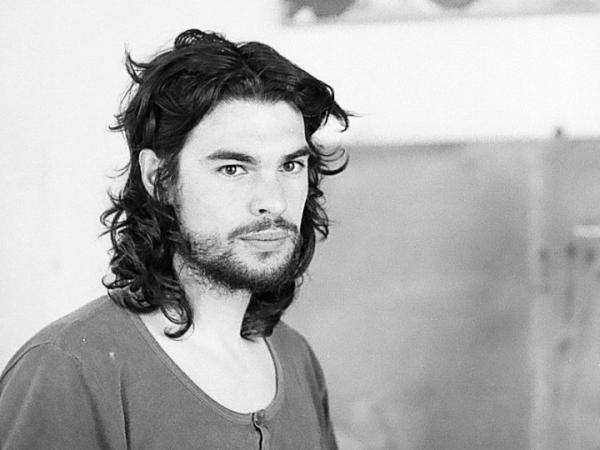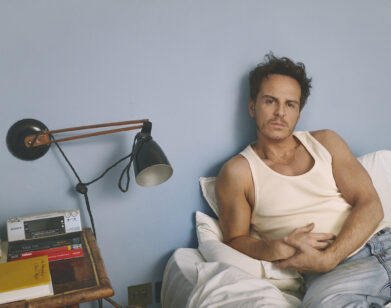Captains Courageous: Oliver Laxe on His New Film

OLIVER LAXE. PHOTO COURTESY OF ZEITUN FILMS
You All Are Captains, Oliver Laxe’s documentary-fiction hybrid, is the most deceptively simple film to be released this year. At the outset, the film presents itself as a standard chronicle of Laxe’s efforts teaching a film workshop for young children in Tangiers, Morocco. As the film slowly unfolds, the divide between what is real and what is not real deepens, digging deeper into questions about the nature of storytelling and film representation. The children, ultimately rejecting Laxe’s self-imposed view of them, take over the film and make it their own.
Laxe, who lives on a palm grove in Morocco, spoke to us over the phone about the origins of the film, the energy derived from not having a back-up plan, and his influences.
CRAIG HUBERT: How did you first develop the idea for the project?
OLIVER LAXE: I wanted to work with children. I wanted to develop a region of my personality. Of course I had questions: Why do we need art? And working with children of this age, these kinds of children between childhood and maturity, it was perfect to find different answers. The first thing I discovered working with the children is when you give a child a camera, he shoots himself. He’s not shooting reality. He’s putting the camera up to his face, you know? So I understood that I just wanted to make a movie about myself. [laughs]
HUBERT: How long were you working the children before you started the film?
LAXE: One year. I was teaching them two hours a week, and then at the end of the first school year, we did the movie. I understood from the beginning that if you want a child to be fresh in front of the camera, the first thing you have to do is give him a camera. If you give him the camera, he’ll be natural when you’re shooting him.
HUBERT: How long did you actually shoot with the children?
LAXE: Not very much. We shot two weeks, maybe 10 days of shooting. We shot more-or-less four hours of film. It was very important to shoot in 35mm. I’m very boring when I’m shooting on digital. I’m extremely boring. I like to shoot with the feeling that I don’t have a plan B. That’s something that happens in cinema: all that is behind the camera appears on the image. I like this energy. I like this feeling, and I think you feel that in the movie. You just shoot at any price.
HUBERT: Did the children have much of an idea of what you were doing while filming? How much did you explain to them?
LAXE: No, that was one of the most important things of this process. In documentary film, you need a conflict—or not. A movie can just be images without conflict. I wanted to play, to do a kind of fiction. I understood that to have this conflict, it was me. I was in the best place to provoke. I did the movie with a group of children that didn’t know me well. I didn’t give them the information, or I played with the information, so all that they say is true. You have to understand that I was obliged to be at the image at the same time, because if I was behind the camera, the children would look at me behind the camera. But my image, you know, I feel like Christ, or Che Guevara, with the poor Moroccan children. This image is very dangerous. I didn’t want to do something humanistic or paternalistic.
HUBERT: Is that similar to the way you’ve referred to yourself as a neo-colonialist filmmaker?
LAXE: I’m playing. In the movie, I’m playing a role. The role is to do a stupid kind of—I’m just laughing about me. In the first scenes when I appear, I’m teaching the children something about optics, about lenses—that is stupid. It’s clear that it’s ironic, and that I’m laughing about me. I mean, the children understand none of this. From the beginning, I knew the problems shooting. I wanted to stress the difference between me and the children at the beginning, because at the end you feel there is no difference, that there is a lot of love between us.
HUBERT: The film is beautifully shot in black and white. Why did you make that choice as opposed to color?
LAXE: The color in Morocco is too beautiful. I was afraid to do a postcard; I didn’t want to make an exotic film. And at the same time, I wanted the collision of the colors of the 16mm footage and the black-and-white 35mm. That was one of the first ideas of this project, and maybe the only important one—this collision between color and black and white. I think the poetry of the movie is not from the two parts of the film, but in the gap between.
HUBERT: Did you look at other films or filmmakers before embarking on this project?
LAXE: Yeah. If you’re shooting in Africa, you’re obliged to know the movies of Jean Rouch. I really like Abbas Kiarostami, and for the kind of movies I do, most important is the work of Maurice Pialat; this energy behind the camera, the idea of shooting at any price, just put the camera on the street and provoke and play with reality. Play behind and in front of the camera. That’s the most important idea in the film—the spectator needs to understand that I’m playing. That’s what I want to express with the movie. I’m a child; I’m playing all the time.
HUBERT: Have the children seen the finished film?
LAXE: Yeah, a lot of times, yeah.
HUBERT: What was their response?
LAXE: They like it, yeah. Of course, their interpretations of the movie are very different, but I’m happy with that. I’m still working with some of them. I’m shooting a project next year in Morocco again where I’m mixing the myth of Faust and a Sufi myth.
YOU ALL ARE CAPTAINS IS PLAYING NOW AT ANTHOLOGY FILM ARCHIVES IN NEW YORK. FOR MORE INFORMATION ON THE FILM, VISIT ANTHOLOGY’S WEBSITE.






